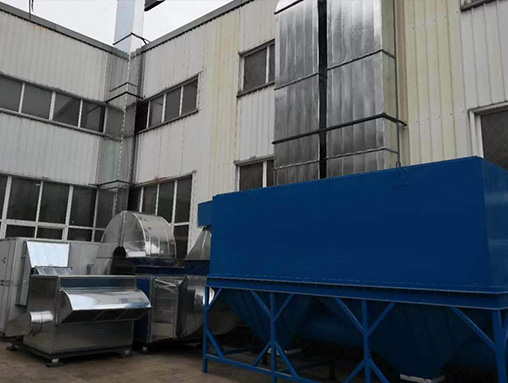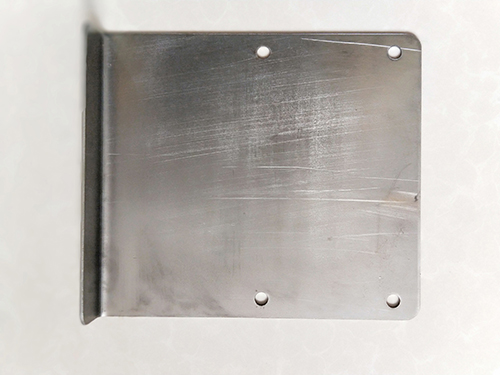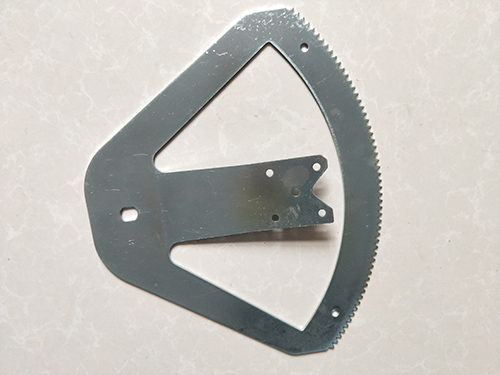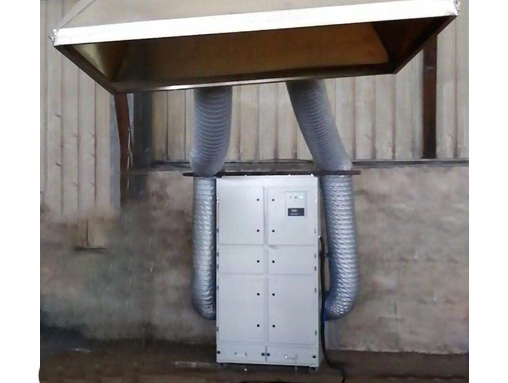Several forms and reasons affecting the service life of cold stamping molds
The service life of cold stamping molds is directly related to the quality and efficiency of product processing, and is an important factor affecting the economic cost and benefits of product processing. It is also an important indicator for measuring the low manufacturing cost of cold stamping molds. For the quality of product processing in enterprises, automotive hardware stamping parts; The processing efficiency of products, reducing their economic costs, achieving significant economic benefits, and striving to improve the service life of cold stamping molds are important factors among many. We have analyzed and studied various factors that affect the service life of cold stamping molds based on specific practical situations. Starting from the structural design of cold stamping molds, we have started with the reasonable selection of materials for cold stamping molds, and adopted various technical means such as the formulation, assembly, and debugging of cold stamping mold processing technology, in order to improve the processing and manufacturing quality of cold stamping molds and extend their service life. So, how to create more, faster, and more cost-effective economic benefits for enterprises? Therefore, a brief analysis will be conducted from the following aspects.
Several forms that affect the service life of cold stamping molds
There are various forms and reasons that affect the service life of cold stamping molds, among which the most important ones are fracture, deformation, wear, gnawing, and so on.
1.1 Fracture
The sudden occurrence of damage, breakage, and cracks in the convex and concave dies of cold stamping molds during use. Due to the fact that the convex and concave molds of the mold are the parts that bear a large amount of impact pressure during stamping work, the convex and concave molds of the mold may break during the stamping process. The main reasons are improper heat treatment processing (quenching or too deep hardness layer), and small design gaps, which can cause damage, breakage, and fracture of the convex and concave molds of the mold. The fracture of the convex and concave molds may be localized damage that we can continue to use, while others may have a significant degree of fracture or irreparable damage, requiring the use of new convex or concave molds according to the design drawings.
1.2 Deformation
The convex and concave dies of cold stamping molds have undergone shape deformation during use, causing changes in the geometric shape of the processed product parts, which in turn affects the dimensional accuracy and shape requirements of the processed parts. This is exactly opposite to the situation of fracture, mainly due to insufficient quenching hardness or too shallow quenching hardness layer of the convex and concave molds during the heat treatment process, resulting in geometric deformation of the convex and concave molds under stress.
1.3 Wear and tear
Metal stamping parts; Wear caused by prolonged and frequent friction between convex and concave molds and the processed material. Due to prolonged friction between the convex and concave molds and the processed material, large-scale and long-term punching of parts, excessive burrs (large gaps) in the punched parts, and small gaps between the convex and concave molds are important causes of wear on the cutting edge of the convex and concave molds. Such as blunting of convex and concave mold edges, rounding of edges and corners, and so on.
1.4 Bite injury
The clearance adjustment and assembly of the cold stamping die's convex and concave dies are uneven, and the adjacent edges of the convex and concave dies bite each other, causing damage to the cutting edges of the convex and concave dies. During the mold assembly process, if the position of the convex and concave molds is offset and the gap is uneven, and when installing a mold without guidance, the adjustment of the gap between the convex and concave molds is not appropriate, resulting in mutual biting and damage between the convex and concave molds.
2 Main reasons affecting the service life of cold stamping molds
There are many reasons that affect the service life of cold stamping molds, but the main ones are still influenced by the cold stamping mold itself and the stamping process. Firstly, it is influenced by the inherent factors of the cold stamping mold. For example, whether the design structure of the cold stamping die is reasonable, whether the material selection of the convex, concave and other structural components of the die is appropriate, whether the hardness and process requirements of quenching are met or exceeded during the heat treatment process, the processing accuracy and quality of each component of the die, whether the assembly gap adjustment of the convex and concave dies is uniform during the die assembly and debugging process, and the smoothness of the convex and concave dies all directly affect the service life of the die.
Secondly, it is influenced by factors related to the stamping process. For example, whether the selection of punching machines is appropriate (the selection of punching machine tonnage), whether the punching machine accuracy meets technical requirements, the quality and degree of superiority of the materials used for the stamped parts, whether appropriate lubricants are selected, the arrangement and rationality of the stamping process, whether the mold is installed correctly on the punching machine, and the operating level of the stamping operator are all the main factors that directly affect the service life of cold stamping molds.
Stamping parts are formed in a progressive die by punching and cutting the remaining material around the stamping part to create its shape. The main reason for the flipping and twisting of stamped parts is the influence of punching force. During punching, due to the presence of punching gaps, the material is stretched on one side of the die (warping upwards) and compressed on the side closer to the punch. When using a discharge plate, use the discharge plate to press the material tightly to prevent the material on the concave mold side from warping upwards. At this time, the stress condition of the material changes accordingly. As the unloading plate increases its compression force, the material on the convex mold side is stretched (the compression force tends to decrease), while the material on the concave mold surface is compressed (the tensile force tends to decrease). The flipping of stamped parts is caused by the material on the concave die surface being stretched. So when punching, pressing and compressing the material is to prevent the workpiece from flipping or twisting.
Reasons and solutions for flipping and twisting of stamped parts:
1. Caused by the burrs generated during punching. Training is required for punching cutting edges, and attention should be paid to checking whether the punching gap is reasonable.
2. The flipping and twisting deformation of the punched parts have occurred during the punching process, resulting in poor forming after bending. It is necessary to start from the punching and cutting station to solve this problem.
3. Instability of automotive stamping parts during bending. Mainly for U-shaped and V-shaped bending. The solution to this problem is to guide the stamping parts before bending, guide them during the bending process, and press the material during the bending process to prevent the stamping parts from slipping during bending.







